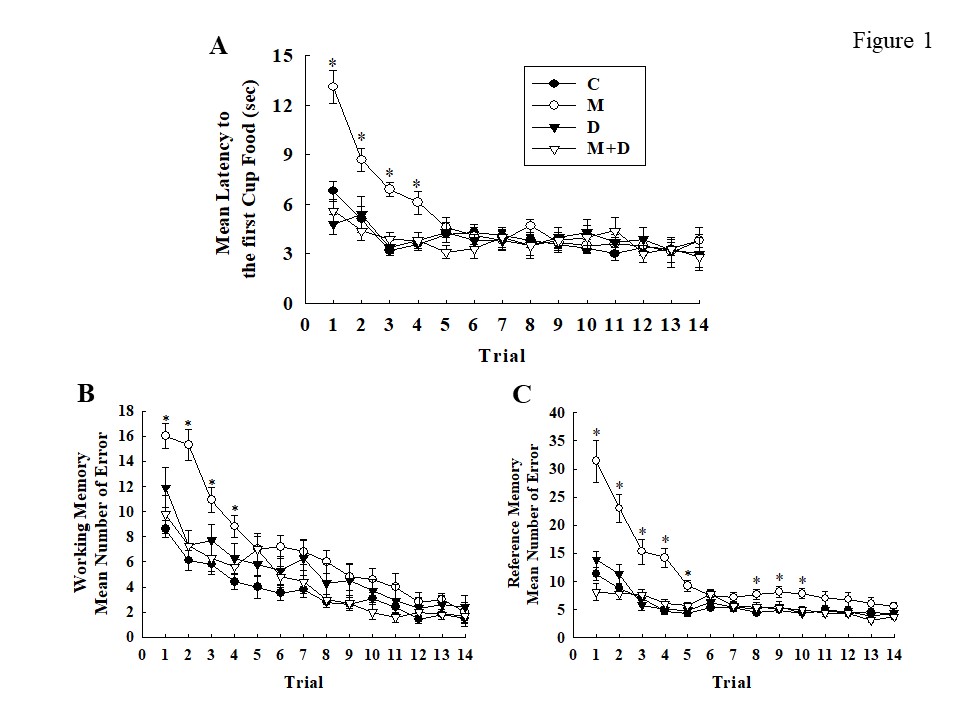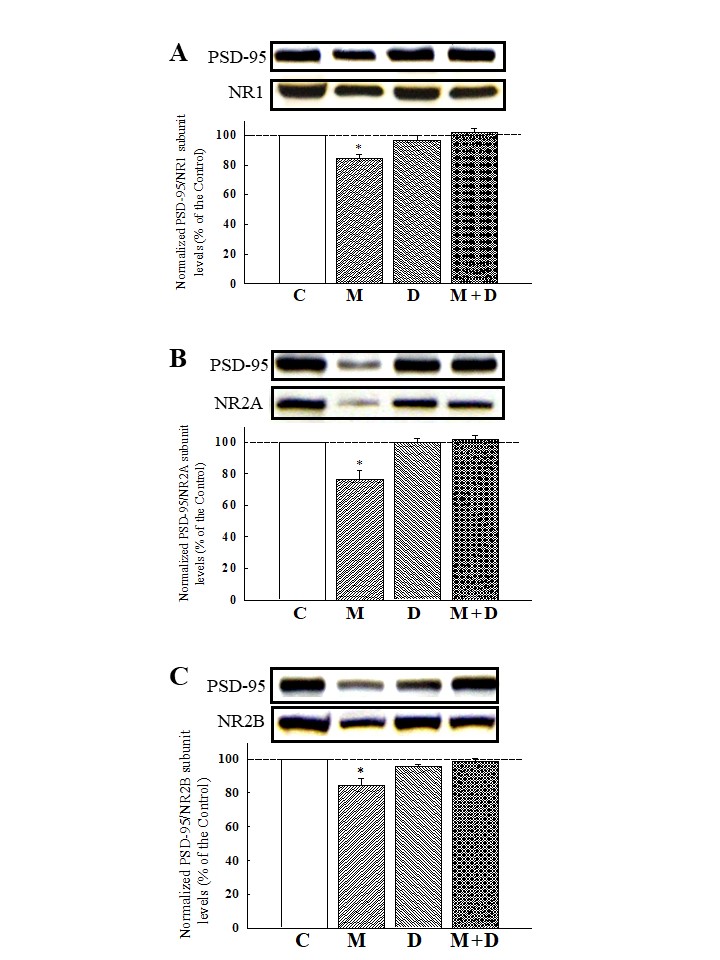Neonatology
Session: Neonatal Neurology 9: Preclinical
332 - Long-Term Adverse Effects in the Postsynaptic Density Protein and Cognitive Function of Rat Offspring Born to the Morphine-Addicted Mothers: a Pre-Clinical Animal Therapeutic Model
Monday, May 6, 2024
9:30 AM - 11:30 AM ET
Poster Number: 332
Publication Number: 332.2876
Publication Number: 332.2876

Pei Ling Wu, PhD
Neonatology, Medicine
Eda hospital
Kaohsiung, Kaohsiung, Taiwan (Republic of China)
Presenting Author(s)
Background: Infants passively exposed to morphine or heroin through addicted mothers usually develop withdrawal syndrome after birth. It has been reported that prenatal opioid exposure would not only lead to neonatal abstinence syndrome in neonate, but would also possibly associate with long-term neurological impairment or attention or behavioral problem later in childhood.
Objective: Here we studied whether synaptic protein complex of postsynaptic density protein 95 (PSD-95) with N-methyl-D-aspartate receptor (NMDAR) and the phosphorylation of cAMP responsive element-binding protein at serine 133 (pCREBSerine-133) of the hippocampus (an important integration brain area for mammalian learning and memory) of rat offspring born to opioid-addicted mothers can changed at the later age of postnatal days 45 (P45). We also evaluated the therapeutic efficacy of dextromethorphan (DM), an antitussive drug with noncompetitive antagonistic effects on NMDARs.
Design/Methods: Adult female Sprague-Dawley rats were separated into four groups and were administered subcutaneous injection twice a day as follows: vehicle-control, morphine hydrochloride, DM or DM plus morphine. Morphine and/or DM were progressively increased at the rate of 1 mg/kg at 7-day intervals from 2 mg/kg for both morphine and DM. After rat offspring were born, the doses of morphine or DM injected into the maternal rats were increased 1 mg/kg every two weeks till the offspring were P14. At P45, the hippocampus of rat offspring will be evaluated through the following techniques: radial arm maze task, immunohistochemistry, western blot, and immunoprecipitation.
Results: The results revealed that prenatal morphine exposure caused the long-term decreased the expression in the synaptic protein complex of PSD-95 with NMDAR subunit and pCREBser-133. In addition, the morphine-treated offspring exhibited a long-term impairment of radial arm maze performance at P45. More importantly, the administrations of DM significantly attenuated the alterations described above.
Conclusion(s): The study suggests that such long-term alterations caused by maternal exposure to morphine within the developing brain may play a role for subsequent neurological impairments. The results raise a possibility that postsynaptic density proteins could serve an important role, at least in part, for the neurobiological pathogenesis in offspring from the morphine-addicted mother and provide tentative therapeutic strategy in precision medicine.


.jpg)
